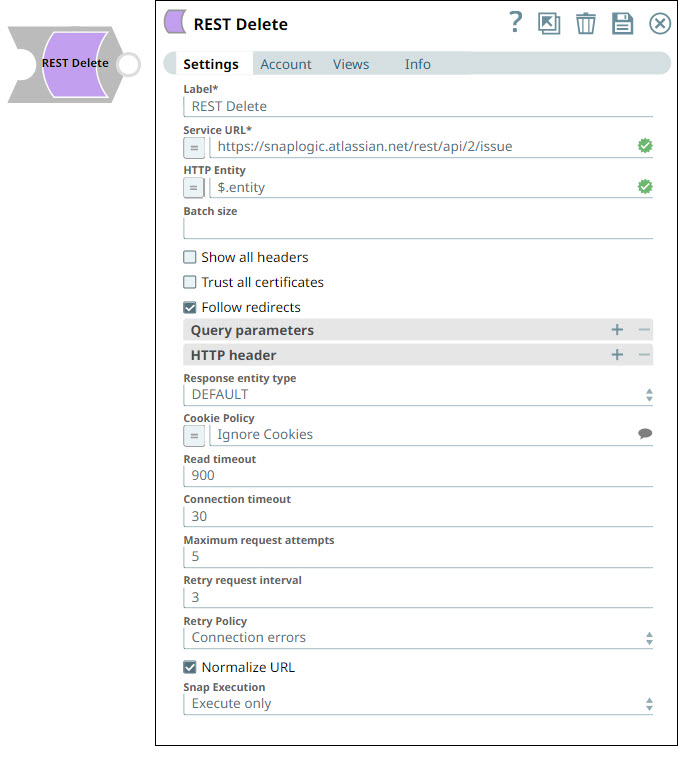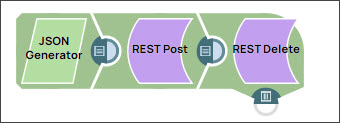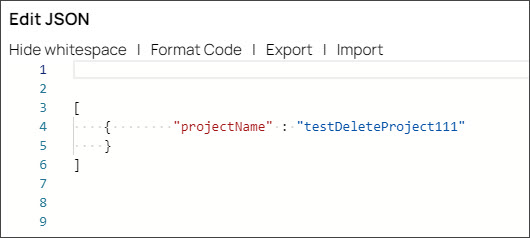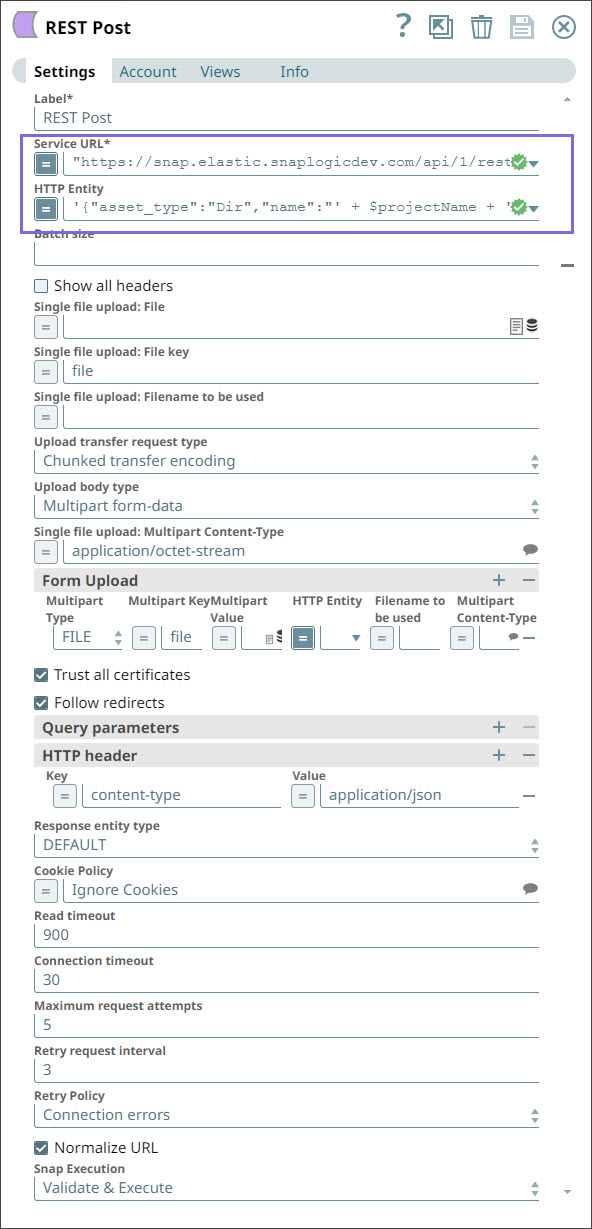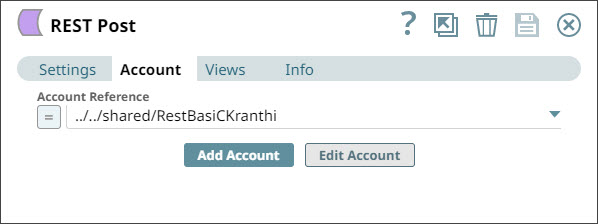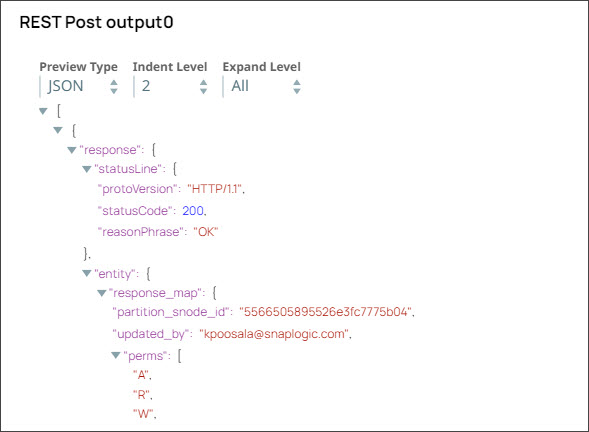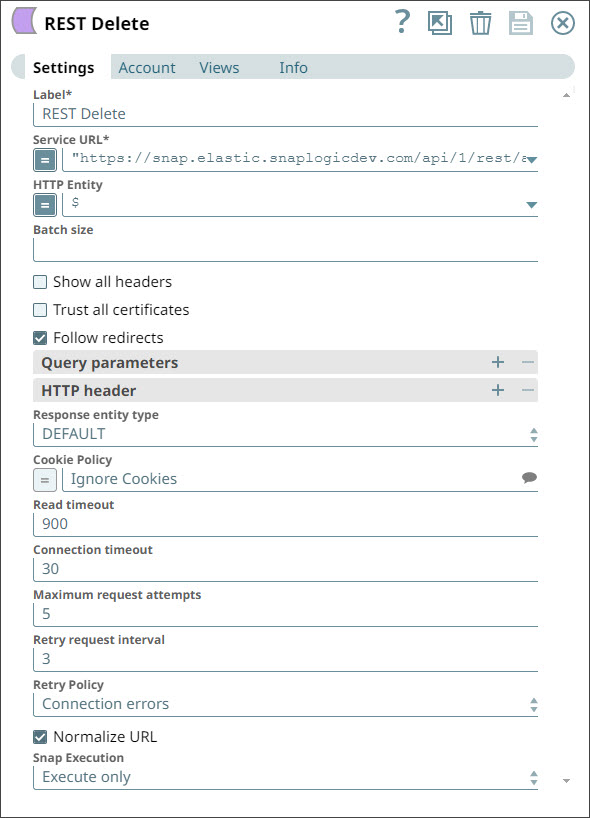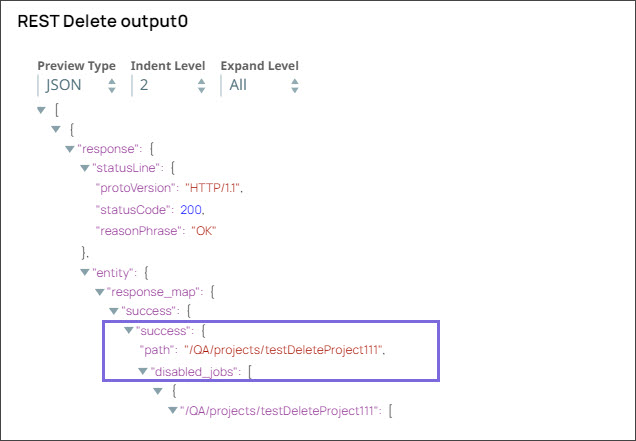In this article
| Table of Contents | ||||
|---|---|---|---|---|
|
Overview
| Multiexcerpt include macro | ||||||||
|---|---|---|---|---|---|---|---|---|
|
You can use the REST Delete Snap to delete business object resources using a REST API call.
Prerequisites
None.
Supported Features
Works in Ultra Task PipelinesTasks. We recommend that you set the batch size to 1.
Limitations and Known Issues
None.
Snap Input and Output
| Input/Output | Type of View | Number of Views | Examples of Upstream and Downstream Snaps | Description |
|---|---|---|---|---|
| Input | Document |
|
| Each input document contains the ID of the object to be deleted at the REST API service endpoint. |
| Output | Document |
|
| Each output document contains response data from the REST API service endpoint detailing the status of the request. |
Snap Settings
| Field Name | Field Type | Description | ||||||||
|---|---|---|---|---|---|---|---|---|---|---|
| Label* | String |
Default Value: REST Delete | ||||||||
Service URL* | String/Expression | | Multiexcerpt include macro | | |||||||
| name | REST_Serviceurl | page | REST Get||||||||
| Note |
|---|
The Service URL for the REST snap has to be valid. If the Service URL contains any special characters, such as !, =, %21, $, and ^, the Snap throws an exception error. You can escape the special characters (using expression language) using one of the following methods:
We recommend you to use the former (encodeURIComponent) method to escape the special characters. |
Default Value: N/A
Example: https://www.example.com/slm/webservice/v2.0/defect/%s".replace("%s", $.widget.id)
| Multiexcerpt include macro | ||||
|---|---|---|---|---|
|
Default Value: N/A
Example: $response.entity.id
| Multiexcerpt include macro | ||||
|---|---|---|---|---|
|
Default Value: N/A
Example: 50
| Multiexcerpt macro | ||
|---|---|---|
| ||
The REST endpoint may return a response with multiple headers with the same header name.
If any of these objects has a key-value format, it is parsed into the map data. |
Default Value: Deselected
Example: N/A
| Multiexcerpt include macro | ||||
|---|---|---|---|---|
|
Default Value: Deselected
Example: N/A
| Multiexcerpt include macro | ||||
|---|---|---|---|---|
|
Default Value: Selected
Example: N/A
| Multiexcerpt include macro | ||||
|---|---|---|---|---|
|
Query parameter
Specify the name (or key) of the query parameter.
Default Value: N/A
Example: oauth2_access_token
Query parameter value
Specify the value associated with the query parameter.
Default Value: N/A
Example: $account.access_token
Multiexcerpt include macro name HTTP_Header page REST Post
Key
Specify the name that you want to use for the HTTP header.
Default Value: N/A
Example: User-Agent
Value
Specify the value that you want to assign to the HTTP header.
Default Value: N/A
Example: SnapLogic
Select one of the following response entity types you want the Snap to display in the output document.:
DEFAULT - Select this option to enable the Snap to process the response automatically. The response entity is processed automatically based on the
Content-Typeheader in the response. If the content provided does not parse with the providedContent-Type, the snap will result in an error.
The following two scenarios describe the Snap’s behavior when using the Process Array checkbox::When you select the Process Array checkbox, the Snap parses JSON or XML and produces a stream of documents at the output view.
When you deselect the Process Array checkbox, the Snaps sends the data as it is at the output view.
TEXT - Select this option to enable, the Snap to produce an entity of string type.
BINARY - Select this option to enable the Snap to produce an entity of byte array type.
| Info |
|---|
If you select TEXT or BINARY, the Snap does not parse the entity content. If you select DEFAULT, the Snap produces the expected result in most cases, but if it fails to process as expected, you can set the Response entity type to TEXT or BINARY. |
Default Value: DEFAULT
Example: TEXT
Cookie Policy
| Multiexcerpt macro | ||
|---|---|---|
| ||
Select a Cookie Policy from the following options:
When using a cookie policy, you must select Show All Headers checkbox to view the parsed cookies from the cookie policy specification. Default Value: Ignore Cookies |
| Multiexcerpt include macro | ||||
|---|---|---|---|---|
|
Default Value: 900
Example: 1500
| Multiexcerpt include macro | ||||
|---|---|---|---|---|
|
Default Value: 30
Example: 45
| Multiexcerpt include macro | ||||
|---|---|---|---|---|
|
Default Value: 5
Example: 3
Multiexcerpt include macro
Default Value: 3
Example: 10
| Insert excerpt | ||||||
|---|---|---|---|---|---|---|
|
| Multiexcerpt include macro | ||||
|---|---|---|---|---|
|
Example: Validate and Execute
Troubleshooting
| Error | Reason | Resolution |
|---|---|---|
| Batch execution failed | The Pipeline ended before the batch could complete execution due to a connection error. | Verify that the Batch size field is configured to handle the inputs properly. If you are not sure when the input data is available, configure this field as zero to keep the connection always open. |
| The provided URI is invalid | Illegal character in scheme name | Verify the URI and parameters that you provide are syntactically correct. |
| URL Parse Exception - 403 | The Service URL path might be containing any of the following special characters: !, =, %, #, $, ^&()_¢äâêîôûñç¡¿ÉÙËǨ°¸ðø©¢¾A+²½µ®§÷¶þ | To escape the special characters, use the global function encodeURIComponent on any variables that might contain special characters so that they are encoded properly. |
| Too many Requests - 429 | There are too many requests to REST endpoint. | Wait for the retry to succeed. Rest related Snaps extract the response header and automatically retry when they encounter status 429. By default, the retry interval (Retry-After) is specified in the HTTP response header. If no value is available for Retry-After, then the Snap’s Retry Interval value is used. |
Example
Creating and Deleting an Account in SnapLogic Using REST Snaps
Prerequisites:
- A valid account.
This example Pipeline demonstrates how to create an account in SnapLogic and delete it using REST Snaps.
Initially, we configure the JSON Generator Snap where we mention the project name - testDeleteProject111.
Then, we configure the REST Post Snap to create the project in SnapLogic using the account-name string of your choice. To do so:
- We use the SnapLogic URL for creating the project in your instance.
- We use '$projectName' in the HTTP entity field to indicate that we want to use the string coming from the upstream Snap.
We click the Account tab and select the account that we want to use with Snap.
When we validate the Snap, it creates a project in the SnapLogic instance. The Snap displays the following output:
The id field lists out the unique identifier of the new project created by Snap.
We now want to delete the project that you just created. To do so, we use a REST Delete for this task.
The project you created is deleted from the SnapLogic instance. Upon validation, the REST Delete Snap displays the following output:
Downloads
| Multiexcerpt include macro | ||||
|---|---|---|---|---|
|
| Attachments | ||
|---|---|---|
|
| Insert excerpt | ||||||
|---|---|---|---|---|---|---|
|
